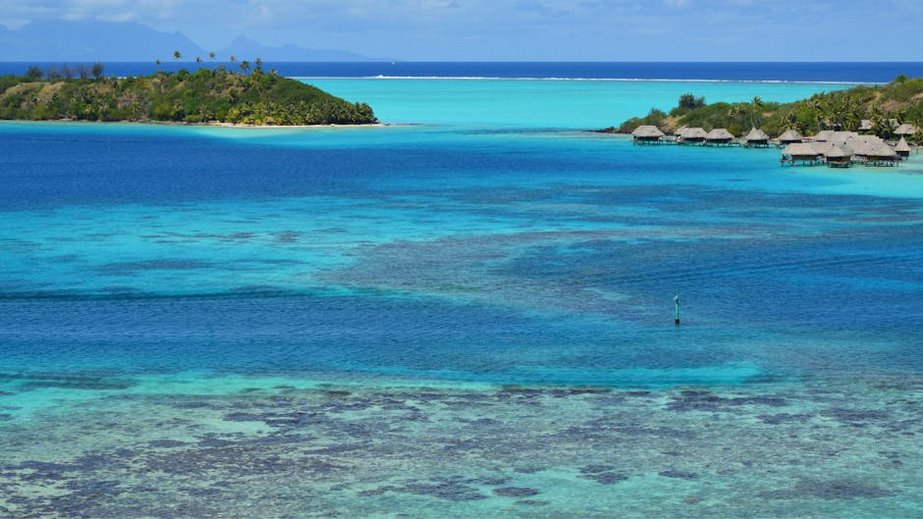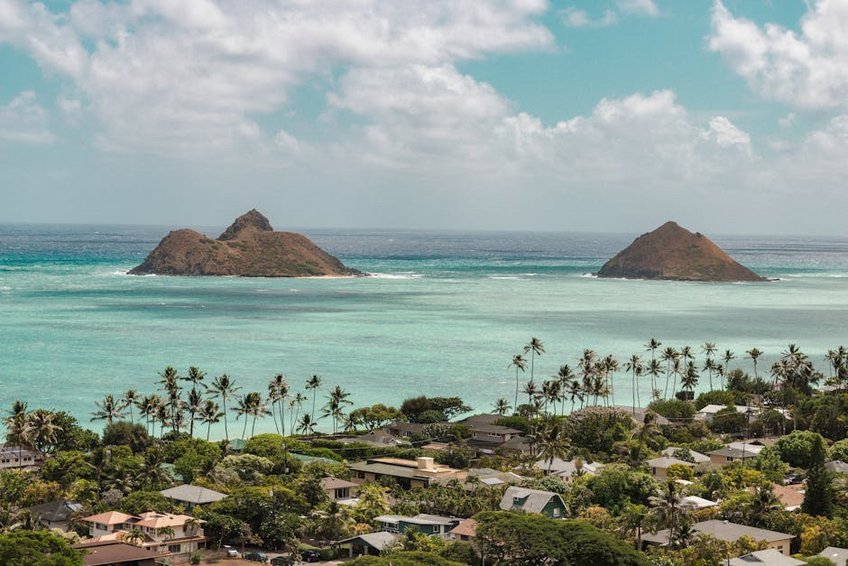Solomon Islands Marovo Lagoon: Your Ultimate Guide to Paradise
Imagine gliding across turquoise waters in a traditional canoe, surrounded by lush volcanic islands and vibrant coral reefs—this is the Solomon Islands Marovo Lagoon, one of the world’s largest double-barrier enclosed lagoons and a true hidden gem in the South Pacific. Stretching over 700 square kilometers in the Western Province of the Solomon Islands, this UNESCO World Heritage tentative site offers an unparalleled blend of natural beauty, rich Melanesian culture, and adventure opportunities that will leave you spellbound. As you plan your journey to this remote paradise, you’ll discover why the Solomon Islands Marovo Lagoon is often called the “Eighth Wonder of the World” by those lucky enough to experience its pristine environment. From snorkeling in crystal-clear waters teeming with marine life to immersing yourself in local village traditions, every moment here feels like stepping into a postcard-perfect dream. This comprehensive guide will walk you through everything you need to know, from practical travel tips to insider secrets, ensuring your visit to the Solomon Islands Marovo Lagoon is nothing short of magical.
Solomon Islands Marovo Lagoon – Essential Information
Before diving into your adventure, it’s crucial to understand what makes the Solomon Islands Marovo Lagoon so special. Located in the New Georgia Islands group, this vast lagoon is enclosed by two barrier reefs, creating a unique ecosystem that supports over 1,000 species of fish and hundreds of coral types. The area is home to around 12,000 people living in traditional stilt villages, where customs have been preserved for generations. You’ll find that the lagoon’s waters are remarkably calm, making it ideal for kayaking, sailing, and swimming, while the surrounding islands offer dense rainforests filled with exotic birds and wildlife. The Solomon Islands Marovo Lagoon isn’t just a destination; it’s a living cultural landscape where nature and humanity coexist in harmony, offering travelers a rare glimpse into a way of life that has remained largely unchanged for centuries.
What is Marovo Lagoon? – A Natural Wonder Explained
- The Solomon Islands Marovo Lagoon is the world’s largest saltwater lagoon enclosed by a double barrier reef system, spanning approximately 150 kilometers in length and featuring over 200 small islands, many of which are volcanic in origin and covered in dense tropical vegetation.
- This area holds significant cultural importance as it’s inhabited by the Marovo people, who have maintained their traditional practices, including wood carving, shell money exchange, and customary governance, making it a living museum of Melanesian heritage that you can engage with respectfully.
- Ecologically, the lagoon is a biodiversity hotspot, part of the Coral Triangle, with mangroves, seagrass beds, and coral reefs that support endangered species like dugongs and hawksbill turtles, offering unparalleled opportunities for sustainable tourism and conservation-focused activities.
- Budget travelers can expect to spend around $50-80 USD per day by staying in village homestays (approximately $20-30 USD per night including meals), using local boats for transport ($10-20 USD per trip), and focusing on free activities like hiking and swimming, with total weekly costs averaging $400-600 USD including flights from major hubs.
- Mid-range options include eco-lodges or guesthouses priced at $80-150 USD per night, guided tours for $30-50 USD per activity, and domestic flights from Honiara to Seghe Airport at about $150-200 USD round trip, resulting in a daily budget of $100-200 USD for a comfortable experience with more structured itineraries.
- Luxury travelers might opt for high-end resorts charging $200-400 USD per night, private boat charters from $100-300 USD daily, and customized diving packages up to $500 USD for multi-day excursions, leading to total costs of $300-600 USD per day for a premium, all-inclusive adventure in the lagoon.
- Solomon Islands Visitors Bureau – Official Tourism Site
- Lonely Planet Solomon Islands Travel Guide
Key Facts and Historical Context
Dating back thousands of years, the Solomon Islands Marovo Lagoon has been inhabited by Austronesian-speaking peoples, with evidence of human settlement found in archaeological sites across the islands. During World War II, the area saw significant military activity, and you can still explore wrecks of Allied and Japanese ships and aircraft, adding a historical layer to your travels. The lagoon gained international recognition in the 1990s for its conservation efforts, leading to its inclusion on UNESCO’s tentative list, which highlights its global significance. Today, the local communities manage the resources through customary tenure systems, ensuring that tourism benefits everyone while preserving the environment. As you visit, you’ll notice how history blends with daily life, from storytelling sessions under starlit skies to guided tours of wartime relics.

Solomon Islands Marovo Lagoon – Planning Your Trip
Organizing a trip to the Solomon Islands Marovo Lagoon requires careful planning due to its remote location, but the effort is well worth it for the unforgettable experiences awaiting you. Start by considering your travel style—whether you’re a budget backpacker, a mid-range adventurer, or seeking luxury eco-resorts—as options vary widely. You’ll need to account for flights, accommodations, activities, and daily expenses, all while keeping in mind the limited infrastructure in some areas. For Western travelers, it’s essential to check visa requirements; US and EU passport holders typically receive a visitor permit on arrival for up to 90 days, but always verify with the Solomon Islands immigration website before booking. Pack light, breathable clothing, reef-safe sunscreen, and a good camera to capture the stunning landscapes, and don’t forget to learn a few phrases in Pijin, the local lingua franca, to enhance your interactions with villagers.
Best Time to Visit Marovo Lagoon
The ideal time to explore the Solomon Islands Marovo Lagoon is during the dry season from May to October, when rainfall is minimal, humidity is lower, and temperatures average around 27-30°C (80-86°F). This period offers the best conditions for water activities like snorkeling and diving, with visibility often exceeding 30 meters, allowing you to fully appreciate the vibrant coral gardens. If you visit between November and April, be prepared for the wet season, which brings heavier rains and higher humidity, though it’s still possible to travel; just pack waterproof gear and be flexible with plans, as occasional cyclones can occur. Shoulder months like April and November can be a sweet spot, with fewer crowds and lush, green landscapes, but always monitor weather forecasts and book accommodations in advance to secure the best deals.
Budget Planning and Costs
Essential Preparation Checklist
To ensure a smooth journey to the Solomon Islands Marovo Lagoon, begin by securing comprehensive travel insurance that covers medical evacuation, as remote areas have limited healthcare facilities. Vaccinations for hepatitis A and B, typhoid, and routine immunizations are recommended, and anti-malarial medication is advised due to the presence of mosquitoes in tropical regions. Pack essentials like lightweight, long-sleeved clothing for sun protection, sturdy water shoes for reef walking, a reusable water bottle with purification tablets, and a power bank for charging devices, as electricity can be unreliable in villages. Lastly, inform your bank of your travel plans to avoid card issues, carry some cash in Solomon Islands dollars (SBD) for small purchases, and download offline maps or navigation apps to stay oriented in areas with spotty internet connectivity.
Solomon Islands Marovo Lagoon – Top Attractions and Activities
Once you arrive at the Solomon Islands Marovo Lagoon, you’ll be spoiled for choice with an array of attractions that cater to nature lovers, history buffs, and culture enthusiasts alike. The lagoon’s clear waters are perfect for snorkeling and diving, where you can explore vibrant coral reefs, underwater caves, and World War II wrecks that have become artificial reefs teeming with marine life. On land, trek through rainforests to discover hidden waterfalls, visit traditional villages to witness woodcarving demonstrations, or simply relax on deserted white-sand beaches fringed with coconut palms. For a more immersive experience, join local guides on fishing expeditions using traditional methods or participate in community-based tourism projects that support conservation efforts. Every activity here connects you deeply with the environment and the welcoming Marovo people, making your trip both adventurous and meaningful.
Must-See Highlights
No visit to the Solomon Islands Marovo Lagoon is complete without exploring its iconic sites, such as the Skull Island cultural area, where ancient shrines and relics offer insights into ancestral traditions. The lagoon’s outer reef edges provide spectacular snorkeling spots like Mary Island, known for its drop-offs and schools of tropical fish, while diving enthusiasts can explore wrecks like the Toa Maru, a Japanese transport ship sunk in 1943. Don’t miss a boat tour to the barrier islands, where you can spot dolphins, sea turtles, and occasionally whales during migration seasons, or hike up Mount Mariu for panoramic views of the entire lagoon system. These highlights not only showcase the natural beauty but also the rich history that makes this destination so captivating for travelers seeking authenticity and adventure.
Hidden Gems and Local Favorites
Venture off the beaten path to discover lesser-known treasures in the Solomon Islands Marovo Lagoon, such as the secluded Uepi Island, which offers pristine snorkeling right from the shore and chances to see reef sharks in their natural habitat. Local villagers often recommend visits to the custom-owned forests of Vangunu Island, where guided walks reveal medicinal plants and bird species like the Solomon Islands sea eagle. For a unique cultural experience, attend a traditional feast in a remote village, where you’ll taste dishes cooked in earth ovens and listen to stories passed down through generations. These hidden gems provide a more intimate look at daily life in the lagoon, allowing you to connect with the environment and communities in ways that mainstream tours often overlook.
Solomon Islands Marovo Lagoon – Practical Travel Information
Navigating the Solomon Islands Marovo Lagoon involves understanding the local transportation options, accommodation types, and daily logistics to make your trip comfortable and enjoyable. Most international travelers fly into Honiara International Airport (HIR) from hubs like Brisbane or Fiji, then take a domestic flight to Seghe Airport on New Georgia Island, which serves as a gateway to the lagoon. From there, you’ll rely on boats—ranging from public ferries to private charters—to move between islands, so it’s wise to book transfers in advance through your accommodation or local tour operators. Accommodations range from basic homestays that offer authentic cultural immersion to eco-resorts with modern amenities, all emphasizing sustainability. Keep in mind that internet access is limited, and credit cards are rarely accepted outside major lodges, so plan accordingly with cash and patience for a truly disconnected retreat.
| Category | Options/Features | Price Range (USD) |
|---|---|---|
| Accommodation | Village homestays, eco-lodges, resorts with overwater bungalows | $20-400 per night |
| Activities | Snorkeling tours, cultural visits, hiking, diving packages | $10-500 per activity |
| Transportation | Domestic flights, boat hires, local ferries | $50-300 per segment |


